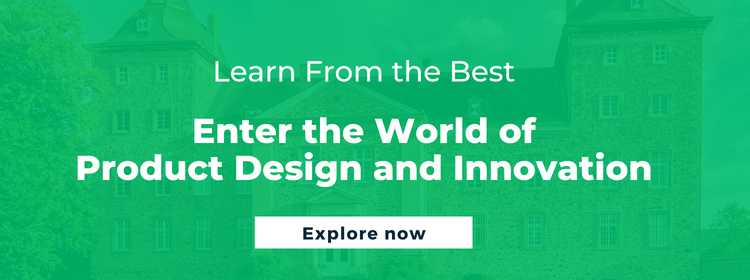Understanding User-Centered Design: The Key to Product Success

- What is the Concept of User-Centered Design?
- How Does User-Centered Design Differ From Other Design Approaches?
- Why is User-Centered Design Important in Product Development?
- What are the Key Principles of User-Centered Design?
- How Can Businesses Implement User-Centered Design in Their Product Development Process?
In a world where there is constant development and innovation, simply building a product isn’t enough. Nowadays, users demand solutions that seamlessly integrate into their lives. As a result, anticipating their needs and delivering intuitive, delightful experiences becomes a must, and this is where User-Centered Design (UCD) comes into the picture. In fact, according to Harvard Business Review, companies with strong designs outperform the S&P Index by 228% over ten years. However, this isn’t just a coincidence; it’s a testament to the power of putting users at the heart of the development process. So, let’s delve into the core principles of UCD and explore how it fosters empathy, integrates user feedback, and ultimately leads to products that resonate deeply with the target audience.
What is the Concept of User-Centered Design?
User-centered design is a design philosophy that prioritizes understanding and addressing the needs, wants, and behaviors of users throughout the product development process. Furthermore, it vouches for a user-centric approach by recognizing that product success majorly hinges on User Experience (UX). The UCD methodology emphasizes:
- Understanding users through methods like surveys, interviews, and usability testing
- Design thinking, which means iteratively developing and refining solutions based on user feedback
- Usability testing refers to evaluating prototypes and designs with real users to identify and address usability issues
Benefits of UCD
Enhanced Product Usability
When UCD is inculcated, products become easier, more intuitive, and more satisfying to use.
Increased Customer Satisfaction
UCD fosters positive user experiences and builds loyalty. Moreover, it is important to note that it does so by addressing user needs effectively.
Reduced Development Costs
Early identification and rectification of usability issues saves time and resources later in the development cycle.
ALSO READ: Top 10 Product Management Trends to Watch Out for in 2024
How Does User-Centered Design Differ From Other Design Approaches?
User-centered design (UCD) stands out from other design approaches because of its focus on the user throughout the entire product development process. Here’s how it stands out:
1. Emphasis
UCD focuses on user needs, emotions, and behaviors that drive design decisions. In other approaches, technology feasibility, business goals, or aesthetics might take precedence.
2. Process
User-centered design is iterative and user-driven, incorporating feedback through research, testing, and refinement. On the other hand, other design approaches are more linear, with less emphasis on ongoing user involvement.
3. Goals
While optimizing the User Experience (UX) with intuitive, efficient, and satisfying interaction is the aim for UCD, other approaches work toward functionality, brand consistency, or technical innovation.
However, the line between user-centered design and other approaches is slowly diminishing. For example, design thinking shares similarities with UCD but also considers technological feasibility and business viability. Ultimately, the best approach depends on the specific context and project goals.
ALSO READ: How to Become a Digital Product Manager: Learn Theses Top 5 Skills
Why is User-Centered Design Important in Product Development?
User-centered design (UCD) isn’t just a trend that is followed globally but also a critical force in product development. Here’s why:
1. Fulfills User Needs
UCD prioritizes understanding and meeting user needs, leading to products that resonate with people and solve real problems. Additionally, this translates to increased customer satisfaction and product success.
2. Reduces Development Costs
By actively identifying and addressing usability issues early through user research and testing, UCD saves time and resources instead of fixing them later.
3. Boosts User Experience
UCD emphasizes intuitive and user-friendly interfaces. As a result, it fosters positive interactions and builds brand loyalty.
4. Data-Driven Decisions
User research and feedback provide valuable data to inform design choices. Evidently, it ensures products are grounded in user reality, not assumptions.
5. Competitive Edge
 In today’s market, user expectations are high. As a result, UCD helps developers stand out by creating products that are truly user-centric, further giving them a competitive advantage.
In today’s market, user expectations are high. As a result, UCD helps developers stand out by creating products that are truly user-centric, further giving them a competitive advantage.
By prioritizing user needs and incorporating their feedback throughout the development process, UCD empowers developers to create products that are not only successful but also deeply desired by their target audience.
ALSO READ: How a Chief Product Officer Uses Product-Led Growth
What are the Key Principles of User-Centered Design?
User-centered design rests upon a set of guiding principles that prioritize the user throughout the product development process. These key principles include:
1. Empathy
Understanding users’ needs, motivations, and behaviors through research and observation.
2. Usability
Designing products that are easy to learn, use, and navigate, further ensuring a seamless user experience.
3. User Research
Continuously gathering user feedback through surveys, interviews, and usability testing to inform design decisions.
4. Iterative Design
Refining and improving designs based on user feedback. Moreover, fostering an ongoing, responsive development process.
5. Accessibility
Ensuring products are inclusive and usable by individuals with diverse abilities.
6. User-Centric Approach
Making user needs the central focus of every design decision. As a result, ensuring solutions truly address user challenges.
7. Clear Communication
Providing clear and consistent information and instructions within the product.
8. Error Prevention
Designing interfaces that minimize user errors and offer intuitive recovery mechanisms.
9. Delight
Going beyond usability to create positive emotional responses and a sense of enjoyment for users.
How Can Businesses Implement User-Centered Design in Their Product Development Process?
Integrating user-centered design into your product development process can dramatically enhance product success. Here’s how:
1. Build a User-Centric Culture
Foster a company-wide understanding of UCD principles and their importance and encourage cross-functional collaboration between designers, developers, and marketing teams.
2. Conduct User Research
Understand your target audience through surveys, interviews, and user observation. Also, identify user needs, pain points, and expectations. Additionally, develop user personas to guide design decisions.
3. Embrace Iterative Design
Create low-fidelity prototypes early and frequently gather user feedback through usability testing. Moreover, refine and iterate the design based on their input. This ensures the product evolves alongside user needs.
4. Establish Feedback Mechanisms
Integrate user feedback channels throughout the development cycle. Additionally, encourage user testing, surveys, and post-launch feedback to gain ongoing insights.
5. Measure and Analyze
Track key user experience metrics like task completion rates and error rates. Be sure to also analyze user feedback to identify areas for improvement and prioritize changes.
6. Invest in Training
Equip your team with the skills and tools necessary to conduct user research, analyze data, and implement UCD principles effectively.
Businesses can create products that resonate deeply with their audience by continuously prioritizing user needs and incorporating their feedback. Doing so will increase satisfaction, loyalty, and, ultimately, greater product success.
In conclusion, user-centered design has emerged as a cornerstone of successful product development. By prioritizing user needs, incorporating user feedback, and iteratively refining designs, UCD empowers businesses to create products that are not only functional but also resonate deeply with their target audience. Moreover, this user-centric approach translates into increased customer satisfaction, reduced development costs, and, ultimately, greater product success. Explore product management courses from Emeritus and upskill your way to success.
Write to us at content@emeritus.org






